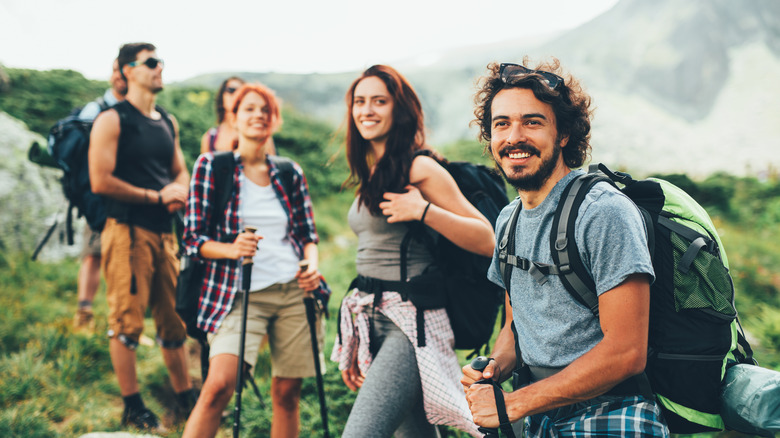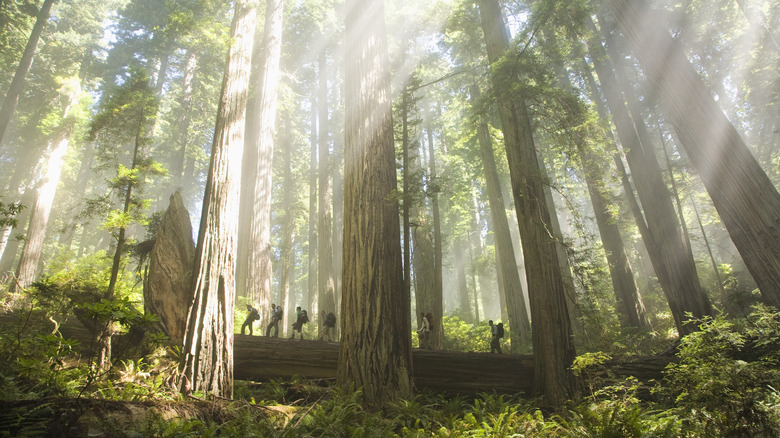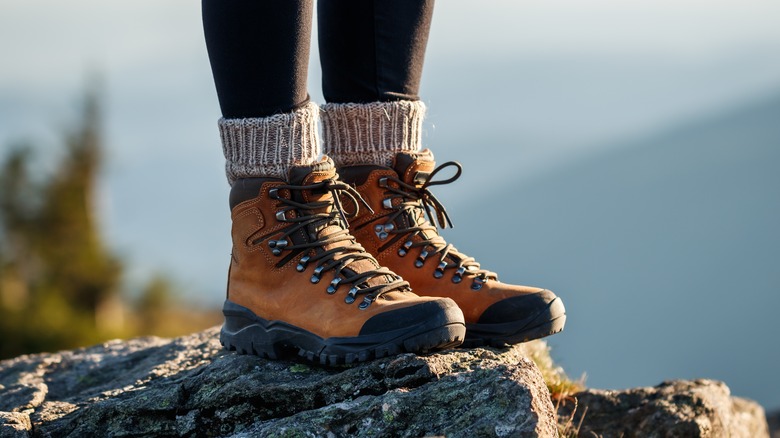Travel Guides Outdoor Adventures
Lauren Richards
Visiting a national park is on many people’s bucket list. Some are even ambitious enough to try and visit them all, from the most popular parks to the lesser-known ones. Visiting a national park is a worthy goal because it offers an immersive experience in nature. Tall trees, towering mountains, glistening lakes, and wildlife are only the beginnings of what they contain. For those looking to escape the bustle of the day-to-day grind and connect with nature, these parks provide a perfect refuge.
National Parks are for everyone. The experienced outdoorsmen and the families with young children are bound to find beauty and fun. Regardless of your level of expertise, one key thing to consider is what you’ll wear. Some, especially people venturing out to a national park for the first time, tend to look at the temperature and plan their outfits accordingly. While this information is important and relevant, it doesn’t tell the whole story. Dressing in layers is the answer.
The importance of layers

Todor Tsvetkov/Getty Images
Elevation levels, time of day, and wind can dramatically impact the temperature, meaning that what was comfortable and sufficient in one location could leave you either shivering or sweating in the next. The solution to this is dressing in layers. You’ll save yourself some discomfort.
Since weather can be finicky in a national park, adding a rain jacket to your bag can save you if it starts raining. “Hikes that started early in the morning were a bit chilly until the sun came out and we started moving. […] The sun is brutal, particularly on the highline trail, it is pretty exposed,” a Reddit user wrote. “[At Glacier National Park] the weather went from beautiful and sunny to dark and rainy in seconds and I am glad I had a rain cover.”
Depending on the weather when you arrive, you can start off dressed for warmth or coolness. Travel guide producers Travel Lemming recommends layering, beginning with a tank top, then a long-sleeved sun shirt, and finally a sweatshirt. If it’s too hot, you can simply take off a layer and put it in your bag. Zip-off hiking pants provide the warmth of pants with the choice to turn them into shorts if the sun is blazing. Leggings are also another great choice, as long as they’re quality material. For women, it’s best if you’re intentional about your sports bra. A medium-impact sports bra provides the best support for this kind of physical activity.
Be prepared from head to toe

Jupiterimages/Getty Images
A hat and sunglasses are always a good idea — even in the winter, given the glare of sunlight that reflects off the snow. A hat, like a beanie, will keep you warmer during the cold months and a baseball cap will keep you cooler during the warm ones. If you’re hiking in the spring, fall, or winter, adding a sweatshirt to your bag can give you the option of extra warmth. If you’re hiking in the winter, be sure to bring a coat you know will keep you warm, like a parka, as well as gloves and a scarf.
One TripAdvisor reviewer chronicled his trek from Grand Teton National Park to Yellowstone National Park and shared how he experienced a roller coaster of temperatures and weather conditions. “[I] had to go back to West Yellowstone and detour to west of Grand Teton National Park to Jackson where the sun was shining,” he wrote. “[I] stopped on the way to photograph Grand Teton peaks but they were shrouded in clouds. [I got] to the Moran entrance and snow and rain started!” Don’t let the variety of weather conditions catch you off guard and ruin your trip. Instead, get all the gear and layers you need to enjoy nature and all its weather patterns.
Shoes for comfort

encierro/Shutterstock
Another key clothing essential are shoes. Comfort over aesthetic is the first rule when considering what shoes to wear. If you have hiking shoes, go with those. For those who are new to the sport, be sure you break in your new hiking boots before venturing out on the trails. By doing so ahead of time, you save yourself from getting blisters and having sore feet on your trek. Your socks also matter. Be sure to choose a thicker pair for extra cushion and comfort.
If you’re hiking and know you’ll encounter streams and other bodies of water, or if you’re heading out in the winter, wear waterproof shoes. Having wet feet can put you in a sour mood, especially if you still have miles to cover before you can change your shoes.
For those packing up the car with the intent of exploring America’s national parks, make sure you have appropriate clothing for the variety of weather conditions you can encounter. From waterproof shoes to sunglasses, have a list of what layers you’ll bring and make sure that each item is checked off. Once your clothing is in order, you’re ready to go on your grand adventure in the great outdoors.

